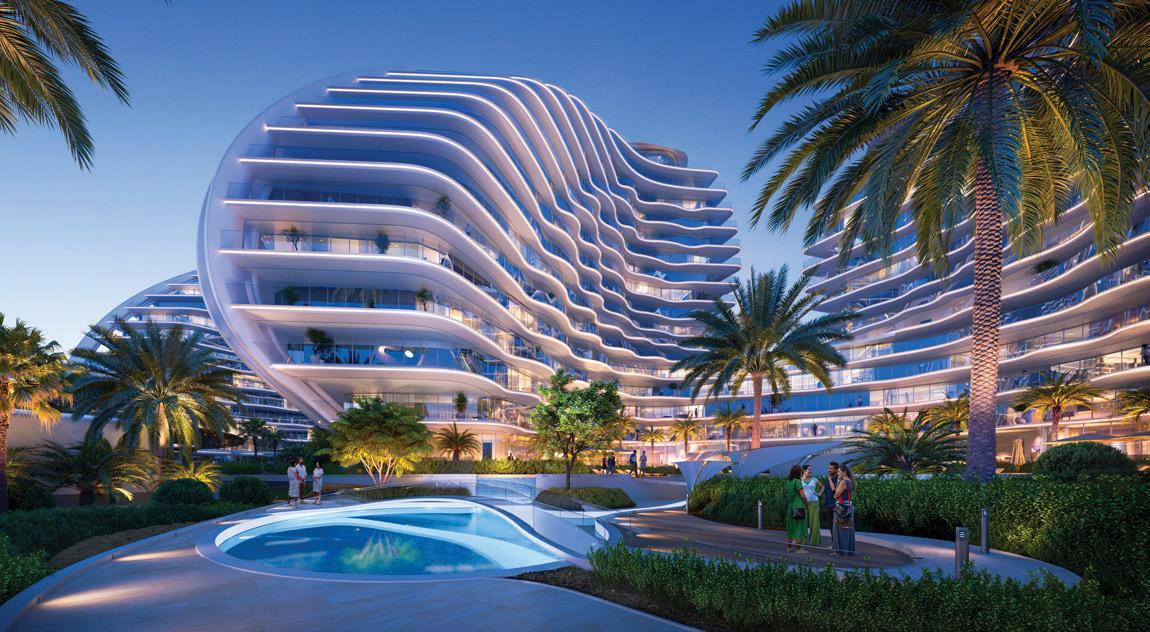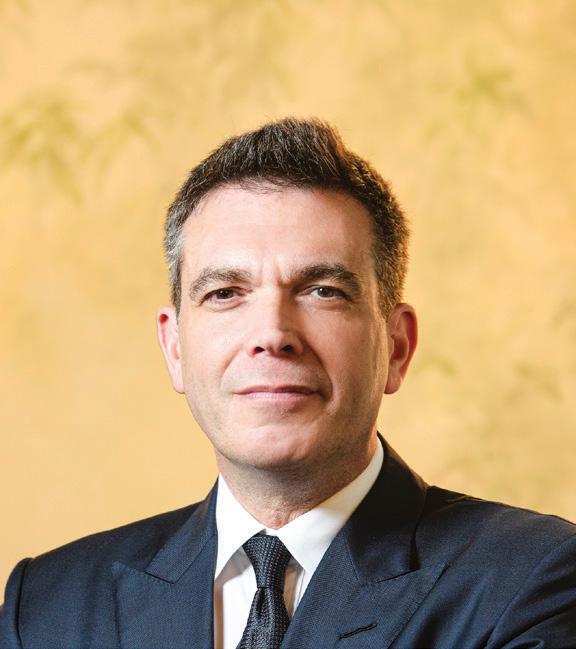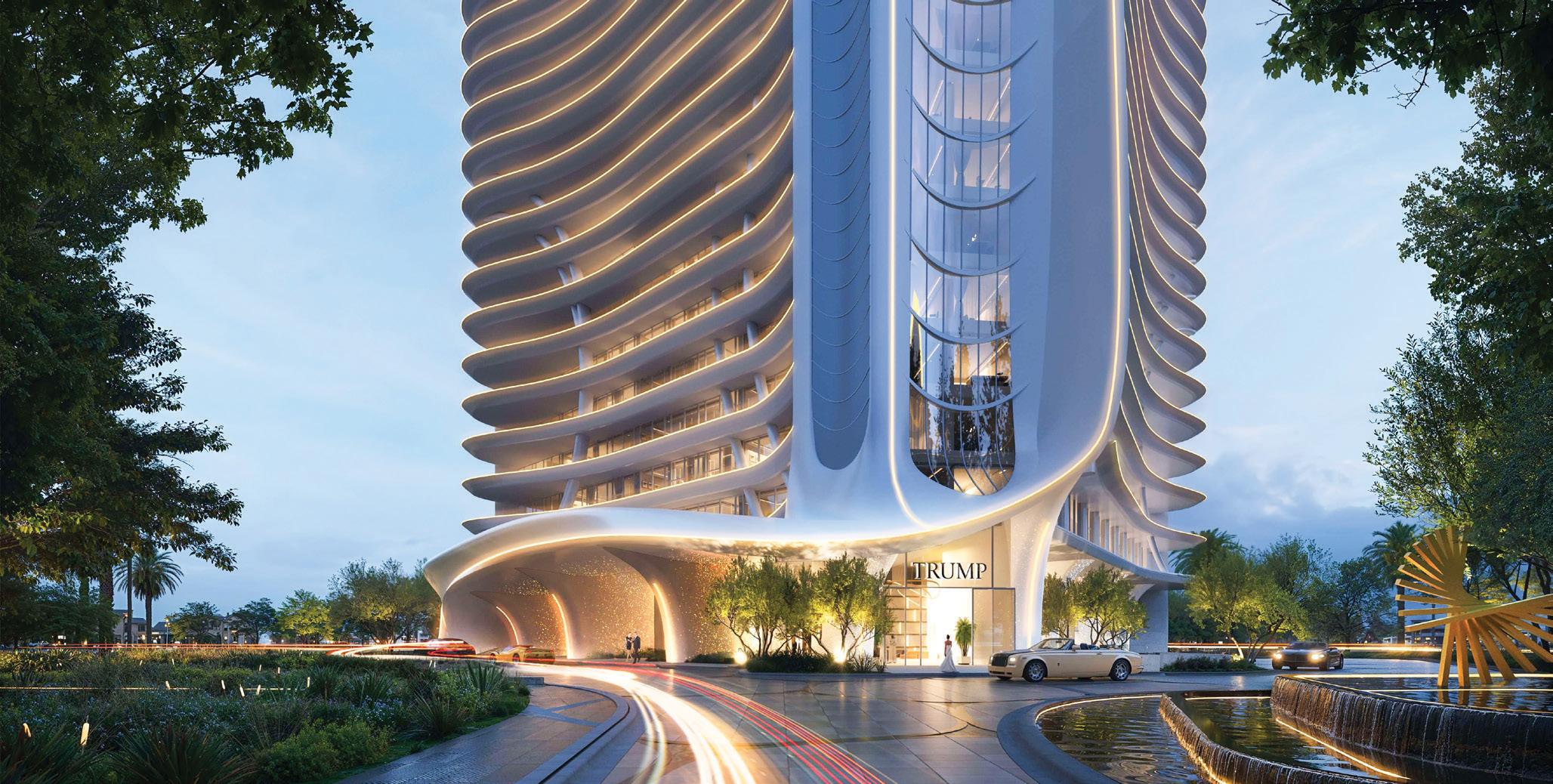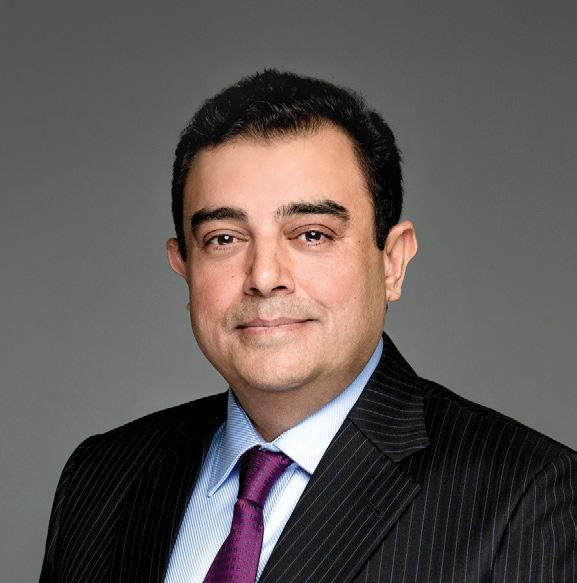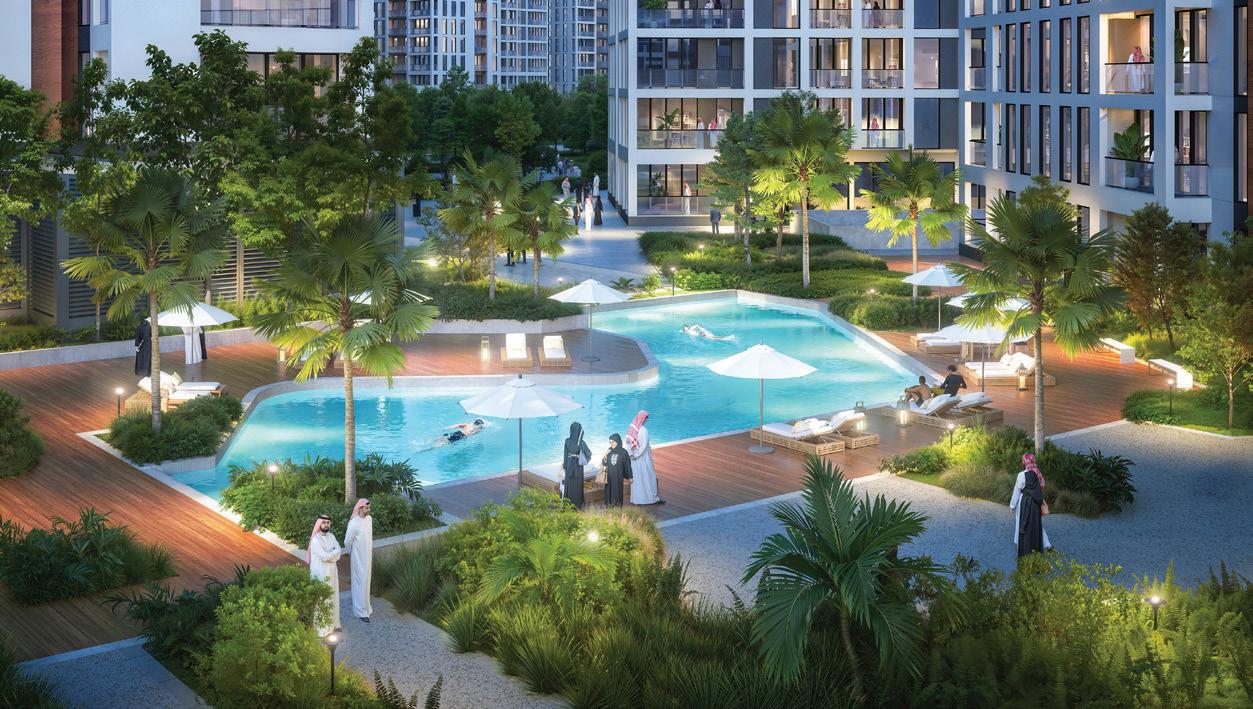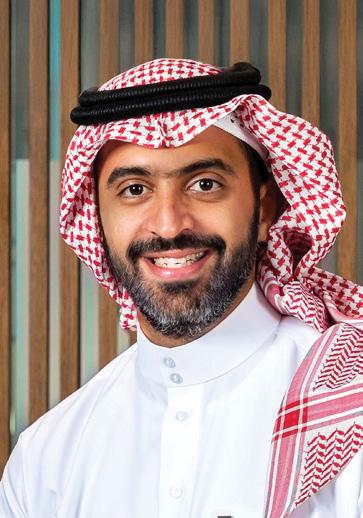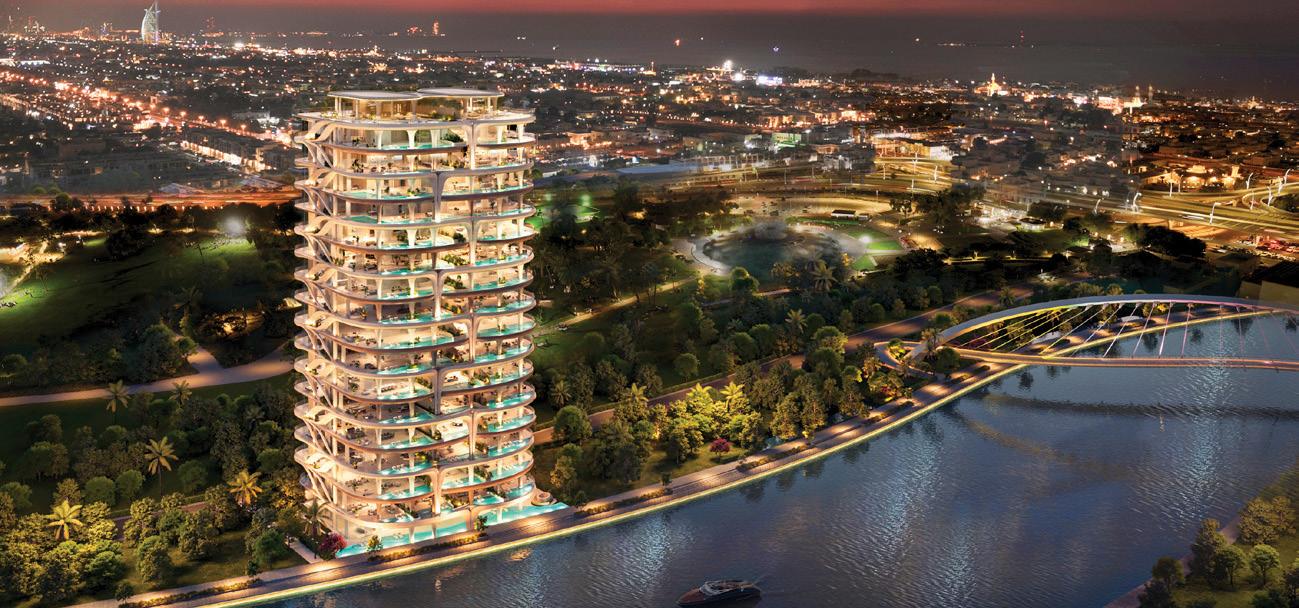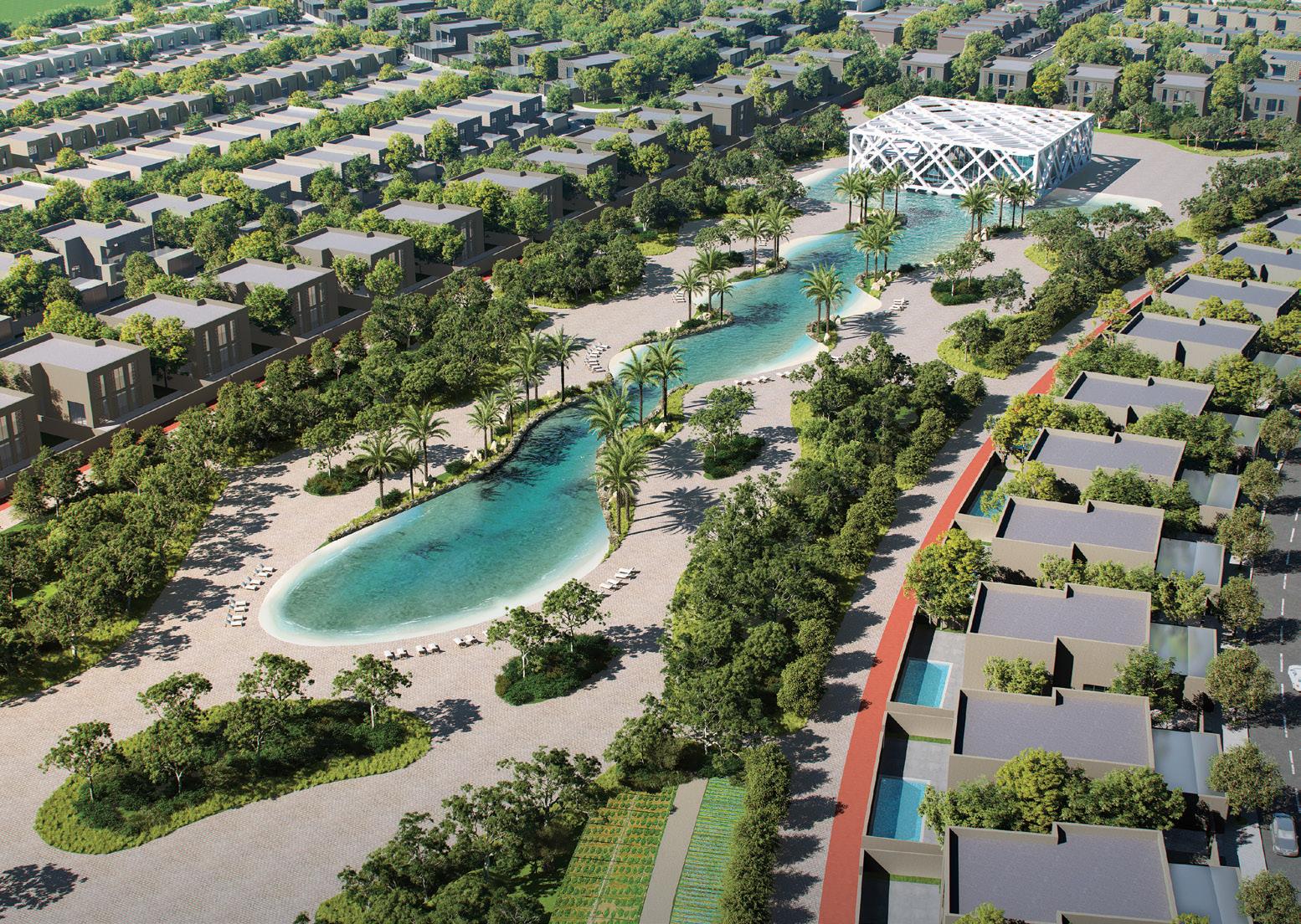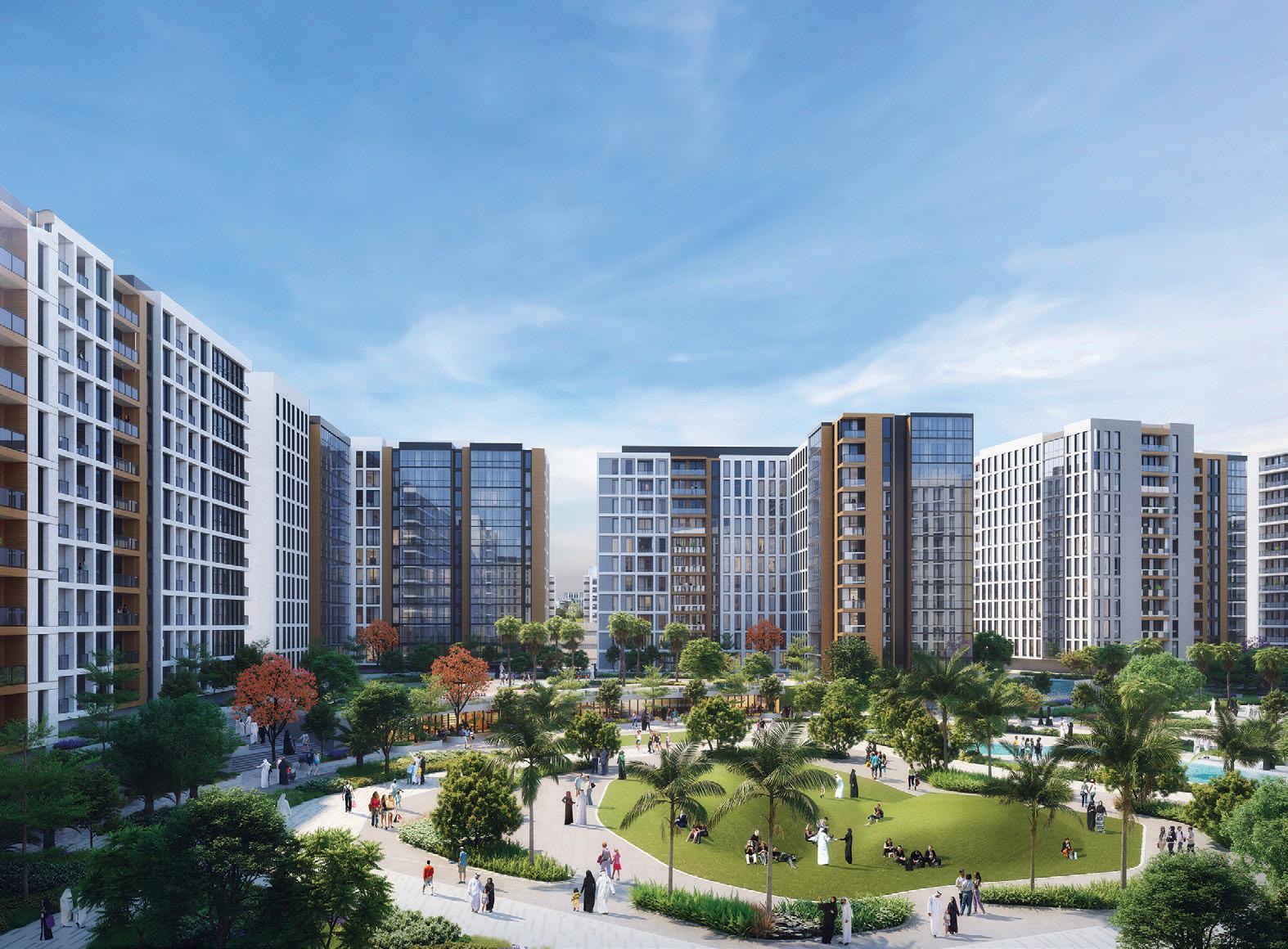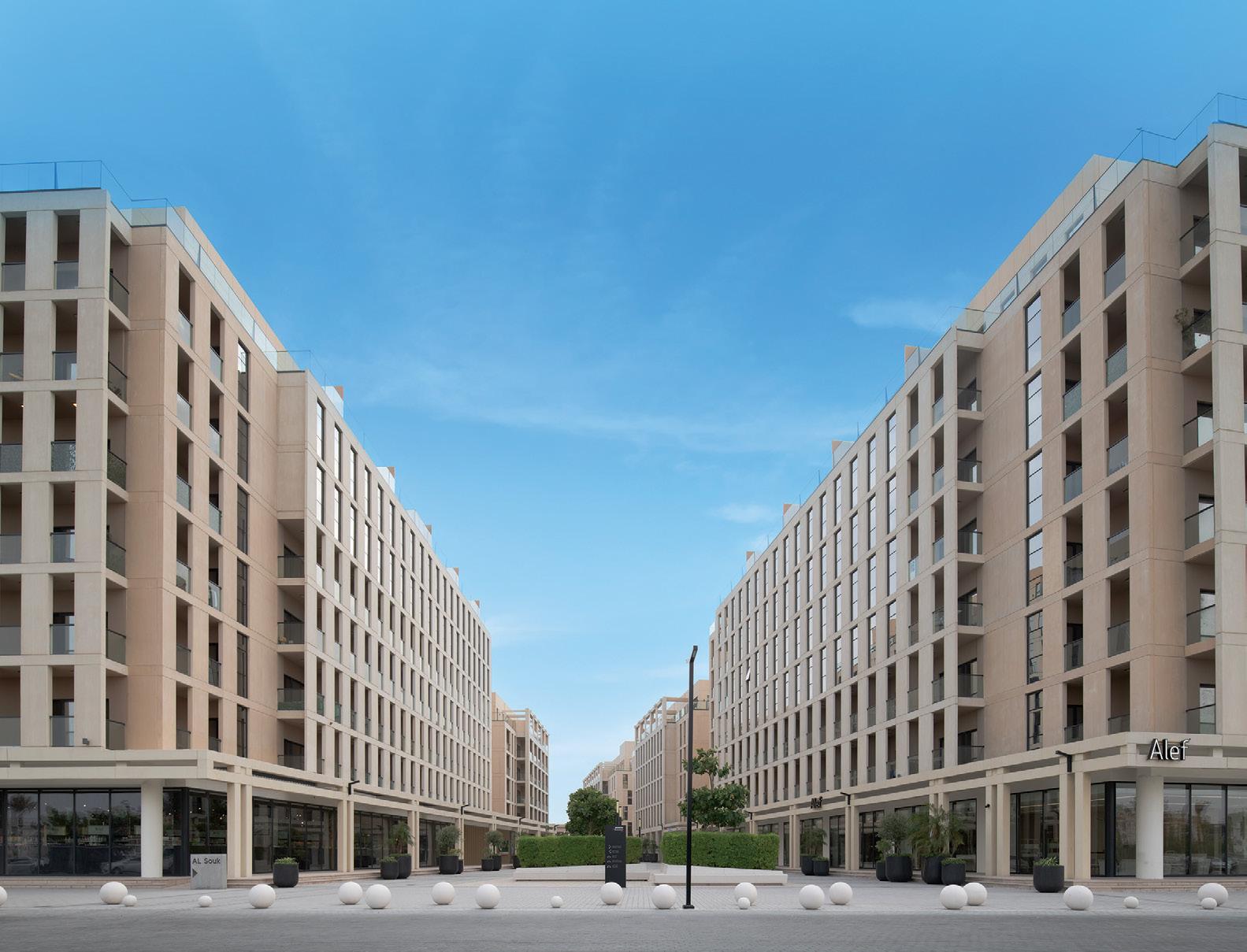P.16
WHAT SHOULD BUYERS LOOK FOR TODAY?
THE UAE'S LEADING DEVELOPERS
WEIGH IN

P.04 DEVELOPER
DILEMMA : Is a market shift elevating the game in Dubai?
P.20 TOWERING AMBITIONS: Dar Global's Ziad El Chaar on redefining luxury living on the world stage

P.16
WHAT SHOULD BUYERS LOOK FOR TODAY?
THE UAE'S LEADING DEVELOPERS
WEIGH IN

P.04 DEVELOPER
DILEMMA : Is a market shift elevating the game in Dubai?
P.20 TOWERING AMBITIONS: Dar Global's Ziad El Chaar on redefining luxury living on the world stage
ISSA ATAYA , ALEF GROUP CEO, ON SHAPING VIBRANT, SUSTAINABLE LIFESTYLE COMMUNITIES THROUGH INNOVATION AND VISIONARY GROWTH POWERED












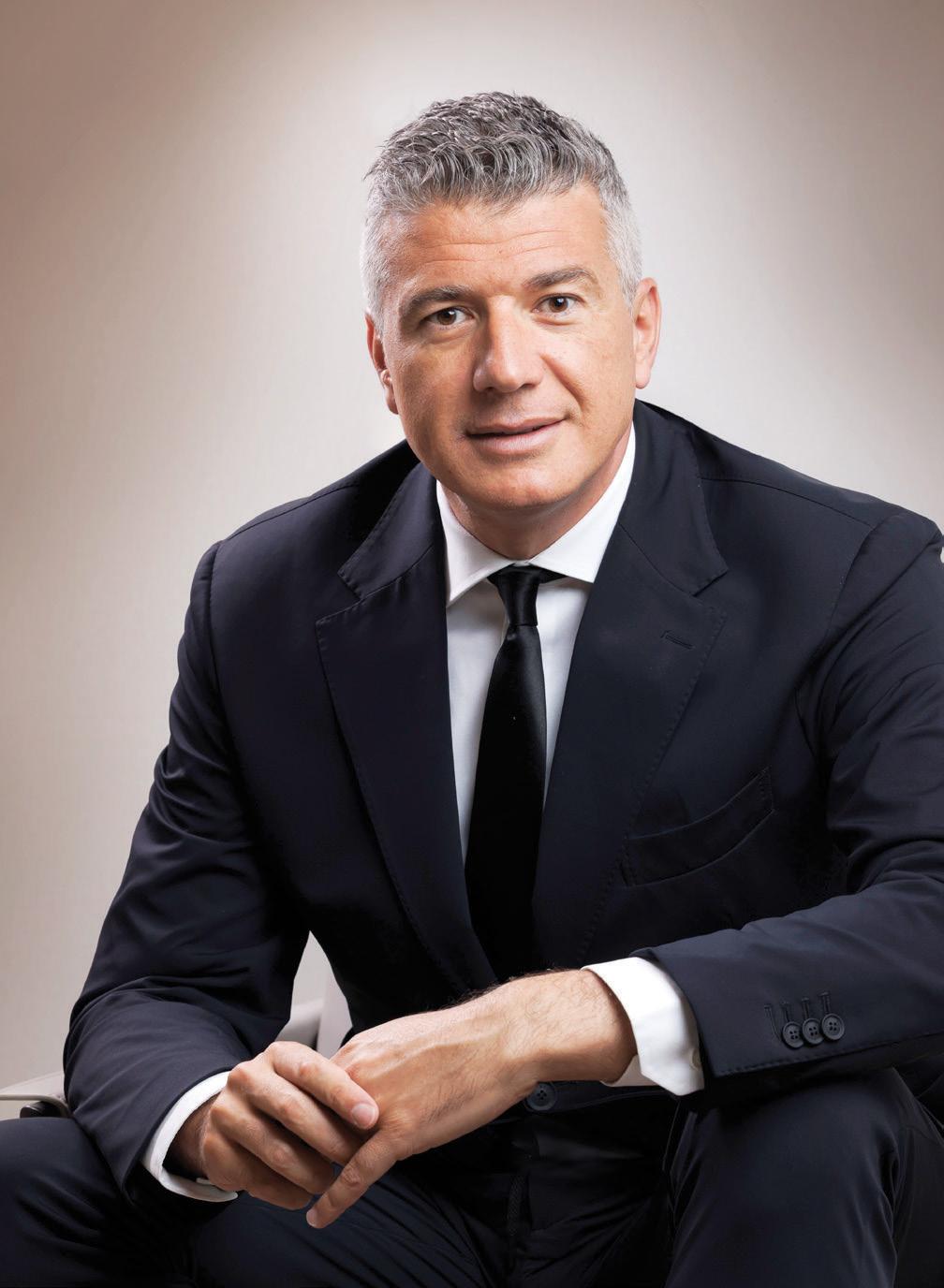
ALEF GROUP: THE FUTURE OF COMMUNITY LIVING

4
We explore the factors driving the current shift in Dubai’s dynamic real estate market
We currently have 14 branded residence partnerships. Our strategy is investorfocused. We develop only in international cities with demand from multiple nationalities. Branded residences offer high desirability and limited supply, making them stable, high-yield products.” 1 0
Led by CEO Issa Ataya, Alef Group is focused on building innovative, sustainable communities in Sharjah
HEAD OFFICE: Media One Tower, Dubai Media City, PO Box 2331, Dubai, UAE, Tel: +971 4 427 3000, Fax: +971 4 428 2260, motivate@motivate.ae
DUBAI MEDIA CITY: SD 2-94, 2nd Floor, Building 2, Dubai, UAE, Tel: +971 4 390 3550, Fax: +971 4 390 4845
ABU DHABI: PO Box 43072, UAE, Tel: +971 2 657 3490, Fax: +971 2 677 0124, motivate-adh@motivate.ae
SAUDI ARABIA: Regus Offices No. 455 - 456, 4th Floor, Hamad Tower, King Fahad Road, Al Olaya, Riyadh, Saudi Arabia, Tel: +966 11 834 3595 / +966 11 834 3596, motivate@motivate.ae
LONDON: Acre House, 11/15 William Road, London NW1 3ER, UK, motivateuk@motivate.ae
Follow us on social media: Linkedin: Gulf Business Facebook: GulfBusiness X: @GulfBusiness Instagram: @GulfBusiness
Editor-in-chief Obaid Humaid Al Tayer
Managing partner and group editor Ian Fairservice
Chief commercial officer Anthony Milne anthony@motivate.ae
Publisher Manish Chopra manish.chopra@motivate.ae
Group editor Gareth van Zyl Gareth.Vanzyl@motivate.ae
Editor Neesha Salian neesha.salian@motivate.ae
Reporter Nida Sohail Nida.Sohail@motivate.ae
Senior art director Freddie N Colinares freddie@motivate.ae
General manager – production S Sunil Kumar
Production manager Binu Purandaran
Assistant Production Manager Venita Pinto
Digital sales director Mario Saaiby mario.saaiby@motivate.ae
Sales manager Hitesh Kumar Hitesh.Kumar@motivate.ae
Cover: Freddie N Colinares

AS DUBAI’S PROPERTY MARKET CONTINUES TO DEMONSTRATE STRENGTH, WE EXPLORE IF THE CURRENT SHIFT IS NOT JUST A TRADITIONAL MARKET CORRECTION BUT ALSO A ‘DEVELOPER CORRECTION’
WORDS SEAN MCCAULEY, CEO OF DEVMARK
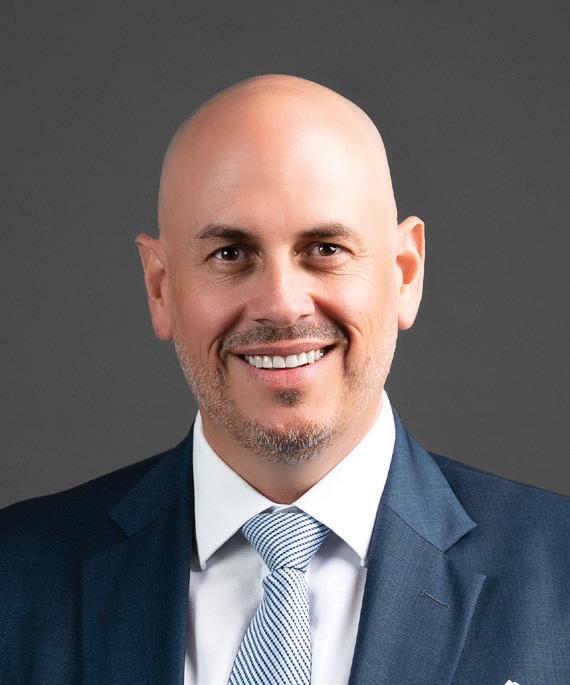
The term “market correction” often evokes unease in real estate circles, conjuring images of declining prices and reduced demand across the board. Yet, Dubai’s real estate landscape suggests a different trajectory — one I refer to as a “developer correction”. Unlike a market correction, which impacts the entire industry uniformly, a developer correction shifts the pressure onto individual developers, compelling them to refine their strategies and remain competitive in a rapidly maturing and discerning market.
Dubai’s real estate sector remains fundamentally strong, driven by robust demand, an expanding population, and its global reputation as a premier destination for living and investment. However, the level of competition among developers is higher than ever before. This intensifying environment means developers cannot rely on market momentum alone to sell their projects. Instead, they must stand out to craft and adopt deliberate strategies that align with buyer expectations around pricing, payment plans, marketing, and overall value.
Pricing plays a critical role in this correction. Developers need to strike a delicate balance between achieving strong price points per square foot and ensuring consistent sales velocity. Unrealistically high pricing can stall demand, making it difficult for a project to gain momentum — and in today’s market, momentum is everything.
Developers typically have one opportunity to generate strong early demand for an off-plan project. If pricing is misaligned and fails to create urgency, the sales journey becomes an uphill battle. Projects that linger on the market for too long often
WHILE THE INDUSTRY ONCE HOVERED AROUND A 4 PER CENT COMMISSION NORM, WE’RE NOW SEEING THAT EDGE UP TO 5 PER CENT —AND PROJECTS OFFERING OVER 6 PER CENT HAVE SEEN AN EXPLOSIVE SURGE IN BROKER ENGAGEMENT, JUMPING FROM A MERE 2 PER CENT IN 2023 TO 16.7 PER CENT IN 2024.

see buyer confidence and interest decline, making it harder to sustain long-term price appreciation and buyer engagement.
This underscores the importance of pricing strategies that align with absorption goals. Developers must carefully evaluate whether their desire for higher price points is worth the trade-off of a prolonged sales cycle — particularly in a market where buyers have more choices than ever. Those who fail to differentiate their offerings or position their pricing correctly risk losing out to better-positioned projects.
Post-handover payment plans (PHPPs) are no longer just an option in real estate — they’ve become a strategic play for developers. In a market where affordability is key, and competition is fierce, developers are leaning into these flexible payment structures to attract buyers and sustain momentum. Our latest research reveals that 75 per cent of projects offering PHPPs now extend for at least 24 months, with half stretching to 36-42 months post-handover. This isn’t just a passing trend — it’s a clear response to evolving buyer expectations. By easing financial barriers and providing peace of mind, these plans are not only expanding the buyer pool but also ensuring developers maintain steady cash flow and market visibility.
As the demand for such structures continues to grow, developers who adapt will find themselves ahead of the curve, while those who resist risk being left behind. For developers, PHPPs present both opportunities and challenges. Those who resist adopting
such buyer-centric payment strategies risk falling behind in a market where financing flexibility has shifted from being a bonus to an essential expectation. Another critical aspect of this developer correction is the increasing need for a well-executed strategic marketing strategy that can be the defining factor in whether a project succeeds or struggles. Developers who underinvest in these areas or fail to create engaging, well-positioned campaigns will inevitably be overshadowed by competitors willing to make these strategic investments.
OFFERING PHPPS NOW EXTEND FOR AT LEAST 24 MONTHS, WITH HALF STRETCHING TO 36-42 MONTHS POST-HANDOVER
At the same time, developers need to invest in impactful marketing campaigns that go beyond generic promotions. Projects that tell a compelling story, highlight a unique lifestyle offering, and leverage immersive experiences generate higher engagement and buyer interest.
In today’s fiercely competitive real estate market, strong broker relationships are no longer a luxury — they’re a necessity. Developers who recognise this are doubling down on competitive commissions, structured incentives, and timely payouts to keep top agents engaged. And the numbers don’t lie as commission rates rise, so do results. While the industry once hovered around a 4 per cent commission norm, we’re now seeing that edge up to 5 per cent —and projects offering over 6 per cent have seen an explosive surge in broker engagement, jumping from a mere 2 per cent in 2023 to 16.7 per cent in 2024. Even more telling, commissions in the 7–8 per cent range, once a rarity, have skyrocketed from 1 per cent to 11.1 per cent year-over-year. This isn’t just a trend; it’s a strategy.
Developers who understand that brokers are the real catalysts for sales success are leveraging incentives more aggressively than ever — because in a market where inventory is high, and differentiation is key, the right commission structure can make all the difference.
Brokers play a central role in driving off-plan sales. Developers who offer competitive commissions, structured incentives, and timely payouts build stronger relationships with brokers, ensuring higher sales momentum and sustained interest in their projects.
Additionally, sales centres play a pivotal role in shaping the customer journey and influencing purchase decisions. A wellexecuted sales centre is more than just a showroom; it is an experiential space that allows buyers to immerse themselves in the vision of the development. From high-quality model units to interactive digital displays and expert sales consultants, sales centres bridge the gap between aspiration and reality, transforming interest into commitment.
At Devmark, we’ve seen firsthand how an immersive sales environment strengthens buyer engagement. Recently, we took a different approach for The Chedi Private Residences, hosting a sales pop-up at the Mondoir Art Gallery,
creating a space that embodied The Chedi’s refined aesthetic.
The setting aligned with the brand’s designled approach, offering buyers a curated experience that felt as considered as the residences themselves. Similarly, for W Residences Dubai – JLT, we developed a dedicated sales gallery at Boulevard Plaza, complete with a fully built-out show apartment. Buyers could walk through the space, experience the finishes firsthand, and get a true sense of what it means to live in a W Residence.
Developers who invest in sophisticated sales centres create a controlled environment where they can effectively communicate the project’s unique selling points, showcase finishes and layouts, and provide a tangible sense of the lifestyle on offer. This level of engagement significantly enhances buyer confidence, reducing hesitations and accelerating decision-making. In a market where differentiation is key, a compelling, immersive sales experience can be the factor that tips the scales in favour of one project over another.
Ultimately, the notion of a developer correction reflects a maturing real estate market where success is determined by a developer’s ability to adapt, innovate, and execute. It is no longer enough to simply build; developers must actively manage the lifecycle of their projects, from pricing and payment plans to marketing and broker engagement.
Projects that fail to gain traction early will face diminishing returns, while those that achieve early success can capitalise on momentum to sustain buyer interest and secure higher revenues over time.
This correction also signals opportunity. Developers who prioritise strategic pricing, invest in marketing, and embrace buyerfriendly payment plans will set themselves apart in a competitive market. By aligning their approach with the needs of today’s buyers, they not only secure their own success but also contribute to elevating the overall standard of Dubai’s real estate industry.
The message is clear: the market remains strong, but only those who innovate and adapt will thrive. Developers who understand the importance of momentum, balance absorption objectives with pricing strategies, and align their offerings with buyer demands will define the future of Dubai’s real estate market.

FOUNDER ABBAS SAJWANI SHARES HOW THE EXCLUSIVE 32UNIT CASA AHS, WITH A GDV OF $750M, CEMENTS HIS FOCUS ON LOCATION-DRIVEN, ULTRA LUXURY COMMUNITIES
WORDS NEESHA SALIAN
When AHS Properties debuted One Canal followed by Casa Canal, Dubai’s ultraluxury market took notice both of its dynamic founder 25-year-old Abbas Sajwani and the company’s ambitious vision to redefine Dubai’s ultra luxury property landscape.
Now, the developer is preparing to unveil its third canalside development — Casa AHS — and we caught up with Sajwani to learn what sets this latest address apart.
“Luxury starts with location,” Sajwani explains, referring to the unique stretch of the Dubai Water Canal that links One Canal, Casa Canal and soon Casa AHS. “On one side you see the city skyline; on the other, Safa Park — few settings can rival it.”
Casa AHS offers 32 ultraluxury residences, including Sky Villas, Sky Mansions and Sky Palaces, ranging from 5,088 to nearly 30,000 sq ft. With a GDV of $750m (Dhs 2.75bn) and average

prices above $20m, these canalfront properties blur the line between a residence and luxury retreat.
“Each purchaser completes a profile check, and our committee approves clients to maintain exclusivity and community standards,” Sajwani notes.


Architect Shaun Killa returns for Casa AHS’s exterior, while HBA Residential handles interiors — continuing a partnership born at Casa Canal. “There’s great chemistry,” Sajwani says. “Shaun captures the architectural spirit; HBA then makes it livable day-to-day.”
Highlights include private infinity pools, spas, and even a golf simulator in one unit. A signature penthouse boasts four pools and private garage access, all framed by double height ceilings up to 12m for uninterrupted canal views.
Residents will enjoy a host of five-star amenities, including a private lounge, resident workspace and 24/7 concierge services accessible via a resident-only app.
Additional offerings include exclusive access to a curated ultrahigh-net-worth network and chauffeured limousine services.
Each residence also comes with electric vehicle charging stations, dedicated bicycle storage, and secured private storage rooms.
AHS’s playbook has remained focused: small collections of ultra luxury homes in prime locations. Last year, the company’s GDV stood at Dhs 1.65bn; with Casa AHS, it exceeds Dhs10bn (approximately $2.75bn). “By year-end, we aim for
6,700 MILLIONAIRES MOVED TO THE UAE IN 2024
$5.5bn (Dhs20bn) in GDV — doubling our footprint with equally exclusive projects,” Sajwani confirms.
One Canal, Casa Canal, and Casa AHS now form a continuous luxury enclave. “It’s about creating a distinct community atmosphere,” he says, “where each project builds on the last.”
Dubai’s magnetism for high-net-worthindividuals aligns perfectly with AHS’s niche. Dubai-based real estate agency BetterHomes reported that 6,700 millionaires moved to the UAE in 2024; Sajwani says Europe — particularly London — is now the strongest source market.
“Issues around UK taxes, security, and inheritance laws are pushing buyers to Dubai,” he explains.
“Our prelaunch sold over 70 per cent of units, mainly to international clients,” he adds.
As demand for curated, ultra luxury living grows, Sajwani’s focus remains unwavering: “We’ll continue developing in the residential and commercial luxury sectors, always anchored by location and exclusivity.”
With Casa AHS set for its public launch and a pipeline aligned to this boutique blueprint, AHS Properties is cementing its position as a key player in Dubai’s luxury real estate landscape.
“THERE’S GREAT CHEMISTRY, SHAUN CAPTURES THE ARCHITECTURAL SPIRIT; HBA THEN MAKES IT LIVABLE DAY-TO-DAY.”
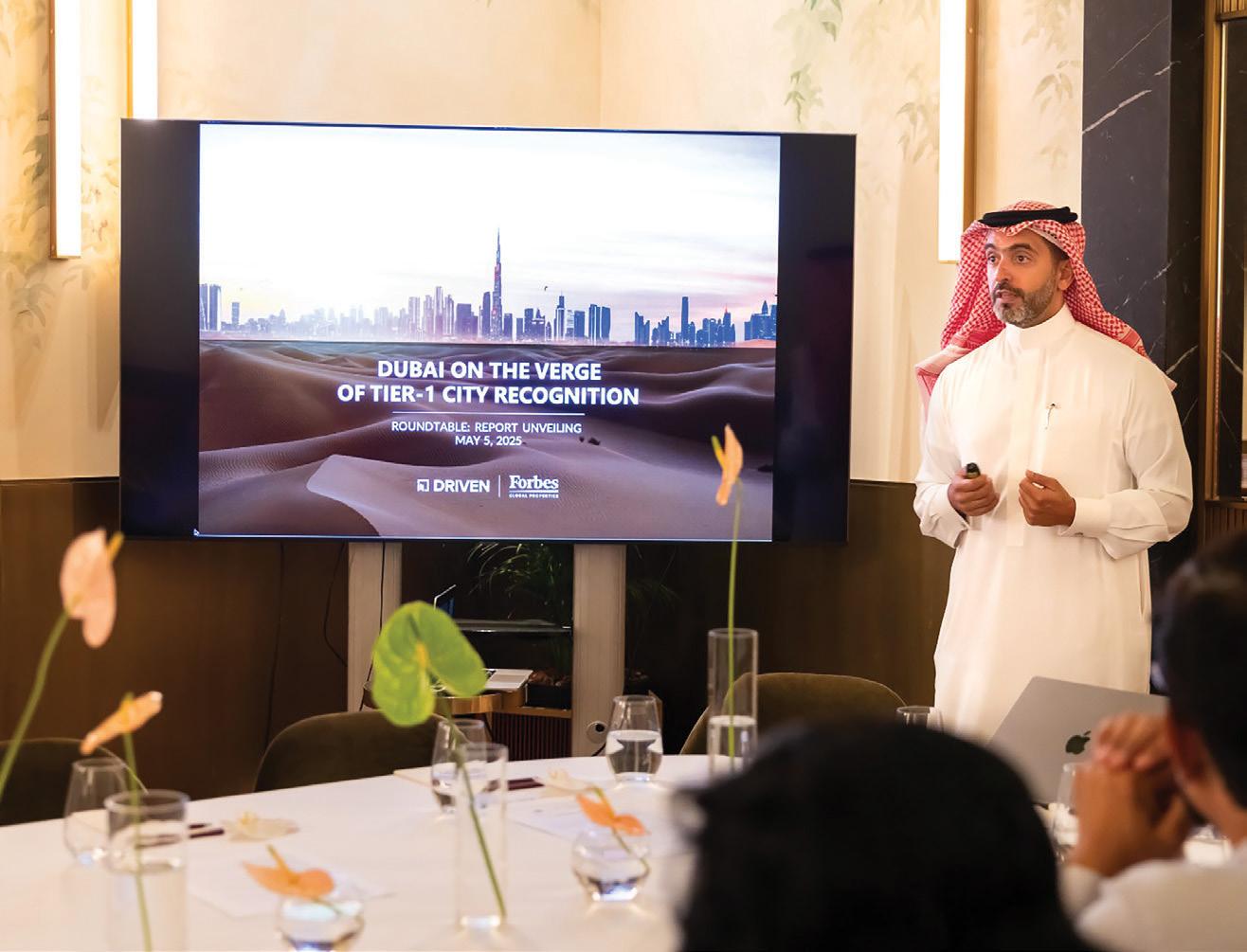
WORDS GARETH VAN ZYL
ubai’s real estate prices could double within the next five years, says Abdullah Alajaji, CEO and founder of brokerage firm Driven | Forbes Global Properties.
The forecast comes amid the emirate’s recent strong growth in real estate prices. Dubai’s real estate market recorded 217,000 investments valued at Dhs526bn in 2024, reflecting growth rates of 38 per cent and 27 per cent in terms of number of transactions and value respectively, according to data from the government of Dubai.

But Alajaji, who launched a new report benchmarking Dubai against the world’s most established global cities earlier this week, said there’s still more room to grow as property prices in Dubai are still lower than counterparts such as New York and Singapore.
“Our thesis here is, if we’re still at one-fifth of the prices of global cities, and the cap rates are still more than double global cities, we do expect that… prices will go up,” Alajaji told Gulf Business. Cap rates, the rental return on a property relative to its total value, are central to Alajaji’s argument.
“The cap rate is basically the yield that a property generates relative to its full value,” Alajaji explained. “For example,
if you’re renting a property that nets you $50,000 a year and the value is $1m, it’s a 5 per cent cap rate.”
He added that unlike previous real estate cycles, current prices are supported by fundamentals. “I would compare this time to pre-2008. Back then, every single area went up at the same level — you’d see 30 to 40 per cent increases in a single year, whether you were in JVC or Palm Jumeirah. But rental yields were much lower. Today, rents have gone up in tandem with prices, which suggests real demand.”
The report released by Driven earlier this week, entitled Dubai on the Verge of Tier-1 City Recognition, introduces the company’s Tier-1 City Index. It benchmarks Dubai against New York, London, Paris, Singapore, Sydney and Hong Kong across 28 indicators including infrastructure, quality of life, safety, economic depth and international appeal.
Dubai ranked fifth out of seven global cities in the index, with standout scores in infrastructure (2nd), international appeal (3rd), safety and security (4th), and quality of life (4th).
Alajaji also highlighted the strength of Dubai’s transaction activity.
“The value of transactions in Dubai reached around $200bn last year — three times higher than London,” he said. “That signals maturity. It shows there’s real depth and liquidity.”
The report found that 43 per cent of survey respondents believe Dubai’s property prices are fairly valued, while 35 per cent saw them as somewhat overvalued. Just 11 per cent believed they are undervalued.
As for market sentiment, Alajaji said: “Overall, we see a stabilisation of the market. The way I would navigate it… is to look at areas that have limited supply of new land available for development.”
He remains bullish on the city’s longterm potential. “We continue to invest in the growth of the city,” he said. “We like it, we enjoy it, and we have fun doing it — so we’ll continue doing so.”
43 PER CENT
BELIEVE DUBAI’S PROPERTY PRICES ARE FAIRLY VALUED

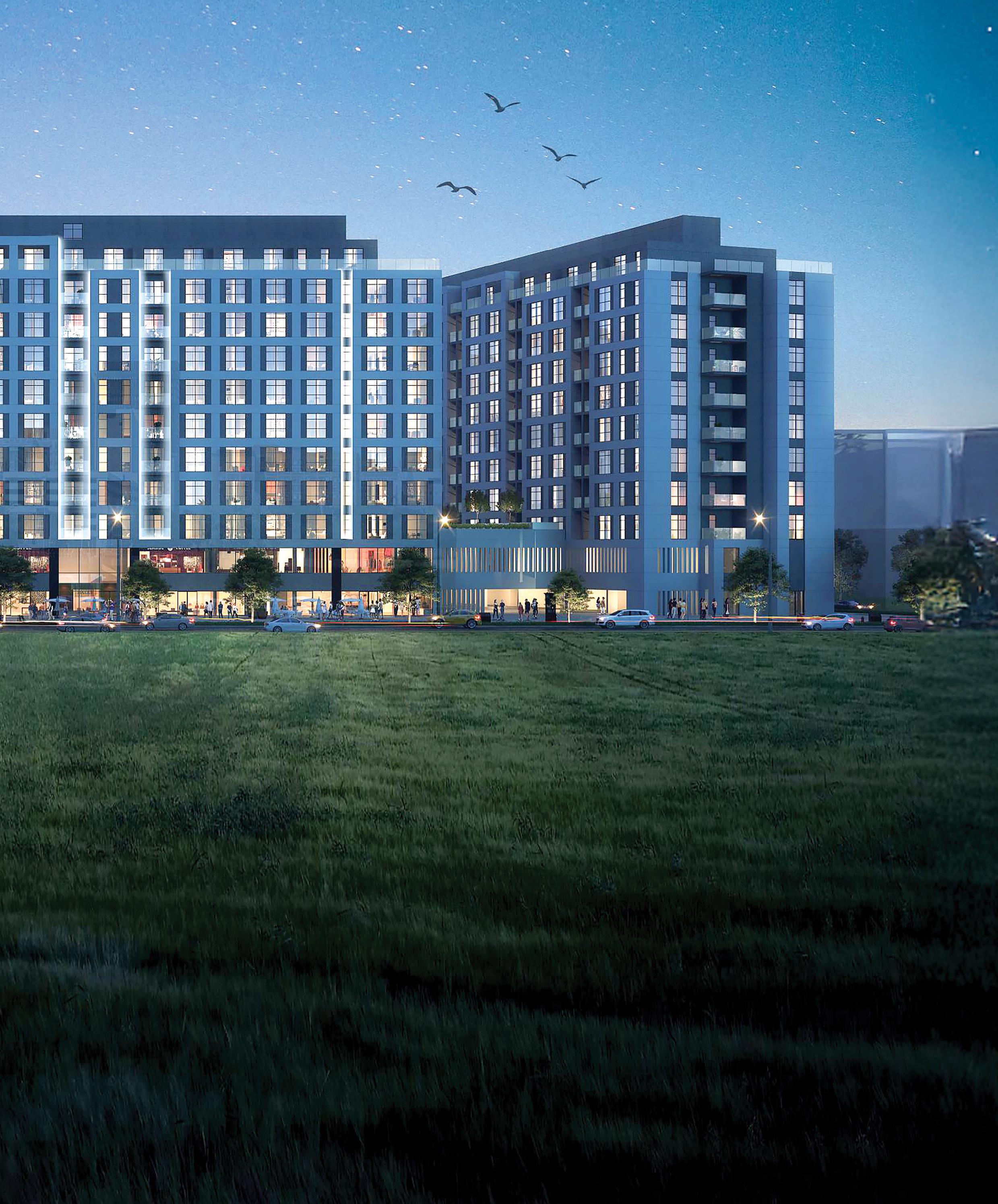


FROM WALKABLE NEIGHBOURHOODS TO SWIMMABLE LAGOONS, ALEF IS REDEFINING MODERN LIVING IN SHARJAH. WITH DHS2.4BN IN 2024 SALES AND BOLD EXPANSION PLANS — INCLUDING BEACHFRONT DEVELOPMENTS AND BRANDED RESIDENCES — THE DEVELOPER IS BETTING BIG ON THE EMIRATE’S FUTURE AS A REAL ESTATE HOTSPOT WORDS: NIDA

While Dubai and Abu Dhabi grab the headlines, Sharjah is quietly crafting a powerful growth story of its own.
In the first half of 2024, real estate transactions in the emirate jumped over 35 per cent year-on-year according to the Sharjah Real Estate Registration Department — a clear sign of rising investor confidence and renewed market momentum.
Analysts point to Sharjah’s improved regulatory frameworks as a key catalyst. These updates have helped boost investor trust, while the emirate’s high quality of life at more accessible price points has drawn in families and mid-tier buyers. It’s a mix that is turning heads.
“Sharjah’s real estate appeal stems from its strategic location, offering proximity to Dubai while maintaining a unique cultural identity. The emirate’s investor-friendly policies, including freehold ownership for expatriates and competitive pricing, make it an attractive destination for both residents and investors. Furthermore, Sharjah’s emphasis on cultural preservation, education, and family-centric developments enhances its desirability,” Issa Ataya, CEO of Alef, told Gulf Business.
STRATEGIC, CULTURAL, AND COST ADVANTAGE
Sharjah’s location — on Dubai’s doorstep — offers investors easy
access to one of the world’s leading commercial centres, yet with real estate costs typically 30–50 per cent lower. It’s a value proposition that’s hard to ignore, especially when quality, infrastructure, and lifestyle are not compromised.
Culturally rich and education-focused, Sharjah continues to build liveable, wellplanned communities. These attributes have cemented its appeal with families looking not just for a property, but for a longterm home.
Momentum continues to build. In April 2025 alone, Sharjah saw 7,206 real estate transactions worth Dhs4bn, covering nearly 10.3 million square feet, according to the Sharjah Real Estate Registration Department.
The emirate’s real estate expansion is being driven by integrated reforms — supportive policies, flexible legislation, and master-planned developments that are attracting both domestic and foreign capital.
Notable deals include a Dhs115m transaction in Al Majaz 3. The spread of activity across 117 areas also signals a broadening market base and a sector increasingly aligned with investor needs.
Sharjah is no longer a quiet alternative. With a rising profile, strong fundamentals, and a pro-growth stance, it’s fast becoming a first-choice destination for savvy investors.
Founded in 2013 by the late Sheikh Khalid Bin Sultan Al Qasimi, Alef is a privately held lifestyle developer with a sharp focus on shaping premium communities and experiences in Sharjah. With assets and land valued at Dhs12bn, the company is spearheading high-quality residential and mixed-use developments that merge business, leisure, and modern living.
Alef leverages Sharjah’s position as the gateway between Dubai and the Northern Emirates. Through partnerships and strategic investment, it is building a legacy rooted in innovation, excellence, and sustainable growth.
Alef’s philosophy is anchored in the ideals of its founder. Sheikh Khalid didn’t simply want to build; he aimed to transform how
people experience real estate in Sharjah. His vision: communities designed with purpose, where lifestyle, sustainability, and innovation intersect to elevate everyday living.
That vision came to life in 2017 with the launch of Al Mamsha. More than a project, it marked a shift to human-centric living — prioritising people, connectivity, and community.
Today, the company remains committed to smart, sustainable urban planning. Every project is designed to be environmentally conscious and responsive to the evolving needs of UAE residents. From masterplans to amenities, Alef focuses on delivering balanced, future-ready lifestyles.
Its mission is clear: to honour Sheikh Khalid’s legacy by setting a new standard for living in Sharjah — driven by innovation, inclusivity, and progress.
APRIL 2025 – MARKET SNAPSHOT
7,206 REAL ESTATE TRANSACTIONS
10.3m sq ft OF TRADED SALES AREA
Dhs4bn TOTAL TRANSACTION VALUE
ALEF’S PERFORMANCE – 2024
Dhs2.4bn+ IN TOTAL SALES
33% YEAR-ON-YEAR SALES GROWTH
Sales recorded across 117 areas, highlighting widespread investor interest
Alef’s expansion is deeply linked to Sharjah’s evolving real estate landscape. By launching diverse communities — from the urban apartments of Al Mamsha and the new Olfah project to spacious villas in Hayyan — the developer caters to both lifestyle seekers and investors.
“Looking ahead, our expansion plans are set to extend beyond Sharjah’s central region. We are exploring opportunities along the emirate’s beachfront west and eastern corridors, aiming to introduce developments that blend modern living with natural beauty. Our commitment is to create integrated communities that not only offer quality living spaces but also enhance Sharjah’s position as a premier real estate destination,” Attaya told Gulf Business.
Sharjah’s broader strategy around infrastructure, urban planning, and affordable living has helped attract residents seeking long-term security and lifestyle balance — an environment in which Alef continues to thrive.
Sustainability is central to Alef’s development strategy. The company is committed to building communities that support environmental responsibility, improve resident well-being, and deliver long-term value.
At Olfah, sustainability is embedded in the design. The project incorporates eco-conscious infrastructure such as fully insulated buildings, double-glazed windows, and energy recovery ventilation systems to enhance energy efficiency and indoor air quality. Additional features include LED lighting, a greywater system for irrigating landscaped areas, and sustainable, interactive water elements. Residents also benefit from a Building Management System (BMS) that optimises energy use and operational efficiency.
25%+ market share in Sharjah’s real estate sector
Olfah reflects Alef’s vision of fusing luxury with nature. Spanning more than 84,000 square metres, it comprises twelve midrise buildings ranging from 9 to 11 storeys. Its centrepiece is Sharjah’s largest private community park — an elevated podium space covering over 26,000 square metres. The park offers uninterrupted views and a tranquil setting, with recreational zones, children’s play areas, an amphitheatre, BBQ spots, resort-style swimming pools, and
Smart home technologies are also integrated into the villas, allowing residents to manage energy consumption efficiently and enjoy enhanced comfort and security. The community’s expansive swimmable lagoon and green spaces further reinforce Alef’s vision of connecting people with nature in a sustainable, balanced lifestyle.”
wellness spaces. Ideally positioned, Olfah is just ten minutes from Sharjah International Airport and five minutes from major educational institutions, making it a strategic choice for families and professionals alike.
Sustainability also defines Al Mamsha, another flagship development by Alef. As Sharjah’s first fully walkable community, it eliminates the need for internal vehicular traffic, helping to reduce emissions while encouraging active, healthier lifestyles. The development integrates smart infrastructure, greywater recycling for landscaping, ventilated walkways that minimise heat build-up, and double-glazed façades that regulate indoor temperatures and cut energy consumption.
Alef’s approach goes beyond compliance — it’s about embedding sustainability into the fabric of modern living. Through thoughtful planning and design, it is redefining what responsible urban development looks like in Sharjah.
“In Hayyan, Alef goes beyond conventional sustainability efforts by encouraging self-sufficient, eco-friendly living. The community offers private allotments within villa plots for residents to practice organic farming, promoting sustainable agriculture at the

community level. Smart home technologies are also integrated into the villas, allowing residents to manage energy consumption efficiently and enjoy enhanced comfort and security. The community’s expansive swimmable lagoon and green spaces further reinforce Alef’s vision of connecting people with nature in a sustainable, balanced lifestyle,” Ataya stated.
Hayyan is a major development being rolled out in phases. Three zones are currently under construction, with handovers expected to begin by late 2026. On-site progress has already advanced significantly.
Designed as a townhouse and villa project, Hayyan embodies Alef’s broader philosophy: lifestyle, retail, entertainment, and leisure must coexist within a single, integrated community.
A key highlight is the “farm-to-table” concept. Each resident receives a private allotment to grow their own organic produce — bringing sustainable agriculture into daily life. Together with its rich lifestyle amenities, Hayyan reflects a complete, community-first approach.
Sustainability is embedded in every phase of Alef’s project cycle — from material sourcing to long-term community operations. Smart home systems are central to this strategy, helping homeowners reduce energy consumption and optimise efficiency.
The company also invests in advanced solutions for irrigation, water recycling, and emissions reduction. At Al Mamsha, Alef’s sustainability credentials are on full display. It’s Sharjah’s first fully walkable community — no internal vehicular traffic is allowed. Thirty-three buildings span the development, all interconnected by pedestrian pathways. The car-free design cuts emissions and enhances the liveability of the space.
Even building orientation plays a role. Alef carefully plans the position of structures to harness natural wind flow, reduce heat, and
improve ventilation. The result: more comfortable outdoor spaces and an environment designed around human experience and environmental harmony.
“Our commitment extends to integrating smart technologies that optimise energy efficiency, security, and convenience across our developments. By adhering to green building standards and minimising carbon footprints, we ensure our projects align with international sustainability benchmarks. These initiatives not only address current environmental challenges but also position Alef as a forward-thinking developer committed to long-term ecological responsibility,” Ataya added.
In Hayyan, Alef continues to push boundaries in mixed-use planning. The community will feature a clubhouse, mosque and retail outlets — bringing essential services and social spaces together. These elements are designed to support daily living and create a sense of belonging, transforming Hayyan into a self-sustained, inclusive neighbourhood.
Meanwhile, Al Mamsha Hamsa brings a more urban, contemporary flavour. This development comprises three buildings and 420 residential units. With landscaped zones, swimming pools, and calming water features, Hamsa offers a tranquil setting with direct access to retail and lifestyle amenities. “Its proximity to key landmarks ensures convenience, catering to the needs of families, professionals, and discerning investors,” Ataya emphasised.
Alef is closely aligned with this vision. Its portfolio — spanning sleek apartments to spacious villas — caters to a wide spectrum of buyers. In 2024, the company reported Dhs2.4bn in sales, up 33 per cent year-on-year, securing over 25 per cent of Sharjah’s real estate market share.
At the ACRES 2025 exhibition, Alef signed 1,006 sales and purchase agreements worth Dhs1.37bn. The event also marked the official launch of Al Mamsha Hamsa, which received strong investor interest. The company also spotlighted Olfah and Hayyan — both praised for their design-led approach and lifestyle focus.
Sharjah’s real estate appeal stems from its strategic location, offering proximity to Dubai while maintaining a unique cultural identity. The emirate’s investor-friendly policies, including freehold ownership for expatriates and competitive pricing, make it an attractive destination for both residents and investors. Furthermore, Sharjah’s emphasis on cultural preservation, education, and family-centric developments enhances its desirability.”
AT AL MAMSHA, ALEF’S SUSTAINABILITY CREDENTIALS ARE ON FULL DISPLAY
IT’S SHARJAH’S FIRST FULLY WALKABLE COMMUNITY
NO INTERNAL VEHICULAR TRAFFIC IS ALLOWED
“This achievement at ACRES 2025 reflects the confidence that investors and residents place in Alef’s vision of redefining modern living. The launch of Al Mamsha Hamsa, alongside the sustained interest in Olfah and Hayyan, underscores our commitment to delivering sustainable and innovative developments that align with the aspirations of Sharjah’s residents and elevate the emirate’s real estate landscape,” Ataya commented.
Alef is now preparing for expansion both within Sharjah and across the UAE. Plans include branded residences in partnership with global developers, aimed at raising the bar for luxury living.
The company is exploring beachfront developments along Sharjah’s western and eastern coasts. One of the upcoming projects will be on Maryam Island, expanding Alef’s footprint along the waterfront.
Two new projects are currently in the conceptual phase and are set to be unveiled later this year. While full details are under wraps, the direction is clear: Alef will continue building smart, resilient, and communitydriven spaces.
Its ambitions mirror a broader shift in the UAE’s property landscape — where innovation, liveability, and long-term sustainability have become essential pillars, not just aspirational goals.
BY NEESHA SALIAN
s Dubai and Abu Dhabi’s real estate markets continue to mature and attract global attention, today’s buyers are faced with more choice — and more opportunity — than ever before. Whether investing in a studio apartment or a luxury waterfront home,
understanding the evolving dynamics of the market is crucial to making sound, futureproof decisions.
We spoke to key leaders from some of the UAE’s most respected developers — Azizi Developments, Nord Lifestyle Development, MAG Lifestyle Development, Palma Development, and Ohana
Development — to uncover the strategies, insights, and trends that should shape every buyer’s approach in 2025.
From choosing the right location and developer to evaluating long-term value, build quality, and wellness-driven design, here’s what these industry leaders recommend.

Buy, don’t rent. Demand for properties in the UAE is surging and is expected to continue doing so, albeit with potential minor corrections in the form of subtle stagnations over the coming years. While supply is growing as well to meet this increasing demand, prices per square foot in Dubai remain far below those of other major metropolitan cities in the world. Dubai offers a much better real estate product, with low to non-existent taxation, world-renowned safety, solid regulatory frameworks, and the distinction of being one of the best places
“STUDIOS EVIDENTLY OFFER LOWER ENTRY PRICE POINTS AND ARE THUS THE EASIEST TO BUY, SELL, AND FLIP.”
to visit, live, work, and invest in – yet homes are still considerably lower priced than in cities that don’t hold all these merits. As such, it is just a matter of time until the much higher price points seen in other global cities are reached here in the emirate, to the benefit of anyone who chooses to buy.
Studios evidently offer lower entry price points and are thus the easiest to buy, sell, and flip. They also enjoy higher tenancy demand, as they are significantly easier to rent out. Larger units with two bedrooms and up, however, are in shorter supply in Dubai, which makes them most likely to see the highest capital appreciation in the coming years.
Before making a purchase, it’s worth looking into the developer’s track record. Have they delivered on past projects as promised? If they check out, zero in on the quality of their work, especially the materials used and the finishes.
Moreover, take advantage of resources like the Dubai Land Department’s REST app for up-to-date property info, making the entire process far more transparent. Finally, look out for flexible payment plans, or even better, the best financing options via well-established mortgage brokerages, especially with off-plan properties, since they can help you manage your cash flow while still setting yourself up for gains in the market.

senior executive vice chairman, MAG Lifestyle Development
For anyone entering the market, careful research is essential. Working with trustworthy developers, examining project schedules, and evaluating long-term value can make all the difference.
Paying attention to trends, location benefits, and upcoming infrastructure is key to maximising appreciation. With off-plan properties performing well, flexible payment options offer an appealing path forward.
Buyers should lead with a long-term mindset. It’s easy to be drawn in by trend-heavy designs or short-term promotions, but real value lies in a developer’s consistency and credibility. How well do their past projects hold up five years after handover? How thoughtfully is the community planned?
The strongest investments are often found in developments where build quality, location strategy, and user experience are all aligned. It’s about trusting the fundamentals—materials, maintenance, and master planning—over marketing flash. A home should be more than visually appealing; it should age gracefully, meet evolving lifestyle needs, and retain its desirability over time.

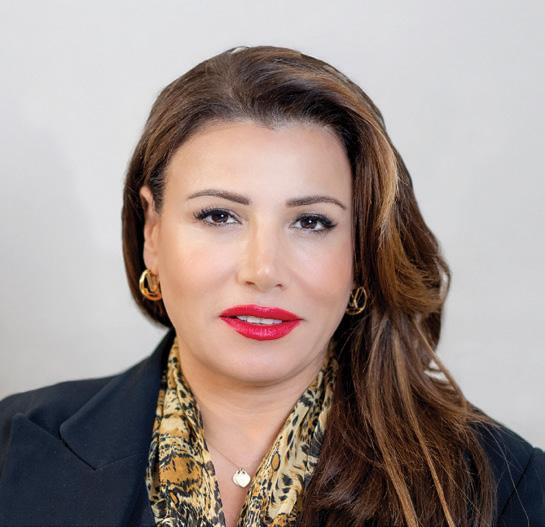
NThe most discerning buyers are no longer driven by price alone — they’re prioritising developments that offer long-term value and elevate everyday living. That means looking beyond the surface to assess planning, construction quality, and the developer’s delivery track record. AT Ohana Development, we’ve seen this play out at our properties, both of which generated strong investor and enduser interest from their early phases. With their emphasis on wellness, sustainability, and digital convenience — paired with prime beachfront and waterfront locations and a lifestyle-led residential environment — these projects continue to stand out, proving that homes built with purpose and foresight offer lasting appeal and stronger returns.
avigating Abu Dhabi’s real estate market in 2025 requires a forward-thinking approach, balancing location, long-term value, and evolving industry trends. Prime areas like those mentioned previously continue to demonstrate strong capital appreciation and rental yields, making them strategic investment choices.
Beyond location, buyers should assess sustainability credentials, developer reputation, and communities that possess comprehensive facilities and amenities enhancing the overall living experience to secure long-term value.
Off-plan properties remain attractive, particularly in high-demand districts, offering strong potential for capital gains. Additionally, emerging trends are reshaping buyer priorities, wellness-focused developments with health-centric amenities are gaining traction, while smart home technologies are becoming essential features in modern residences. The rise of mixed-use developments, integrating residential, commercial, and leisure spaces, is also transforming urban living experiences.

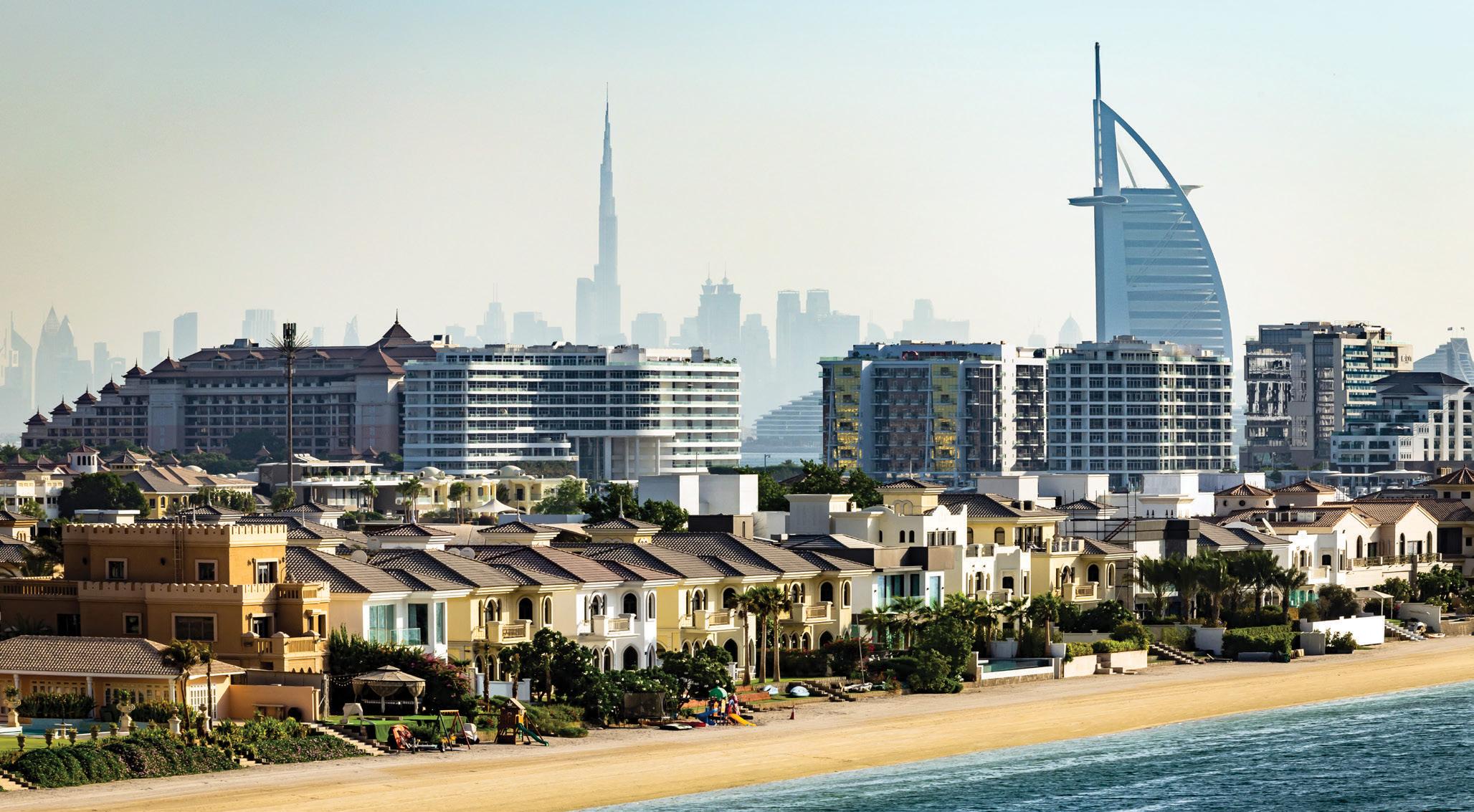
IN THIS INTERVIEW, THE CEO OF SAMANA DEVELOPERS IMRAN FAROOQ EXPLAINS WHY DUBAI CONTINUES TO ATTRACT GLOBAL WEALTH AMID GEOPOLITICAL INSTABILITY, WHY THE OFF-PLAN MARKET IS STILL RED HOT, AND WHY DEMAND FOR GRADE A OFFICE SPACE IS SOARING Q A &
How do you see the state of the Dubai real estate market today? Some earlier reports suggested stabilisation, but recent data from the likes of Property Finder and Bayut show continued strong momentum. What’s your take?
I think things are going great guns: there’s zero doubt about that. Overall, Dubai is becoming more and more popular. Look at what’s happening in the West, particularly the UK. The government there seems to be driving wealthy individuals away with harsh tax policies. As a result, the UK is losing the most millionaires and billionaires, and Dubai is the biggest beneficiary. I believe 63 or 64 per cent of Brits relocating are coming to Dubai, making it the number one destination globally for high-net-worth individuals.
A few years ago, France had similar discussions in its parliament about global taxation. That pushed more people out. And now, with new disturbances in the US, I suspect we’ll see even more capital flow towards Dubai. On top of that, geopolitical instability across the Arab world is also driving people here. It’s not any one sector driving the demand — it’s everything.
The pandemic was a huge catalyst. Dubai responded quickly with the remote work visa, followed by the golden visa. The price threshold for the golden visa has also come down — from Dhs10m to Dhs2m — and you can now qualify with just 20 per cent down on an off-plan property. That’s a huge pull factor.
People often ask if Dubai is only for the rich. I don’t think so. Dubai is attracting people across the board, including the workforce. Even conflicts like the Russia-Ukraine crisis brought both Ukrainians and Russians here, many felt mistre ted in the West and sought refuge. Dubai is now seen as a global safe haven: not just for one nationality or group, but for people from all over the world.
Who are the biggest buyers in the off-plan segment today?
Everyone. We promote Samana projects in more than 55 countries, and we’ve done very well globally. Around 70 per cent of our sales come from about 20 countries. At each launch, the dominant nationality changes — it could be Indians, French, or Emiratis — it really depends on who gets access first.
For example, 85 per cent of our stock typically sells out within 48 hours of
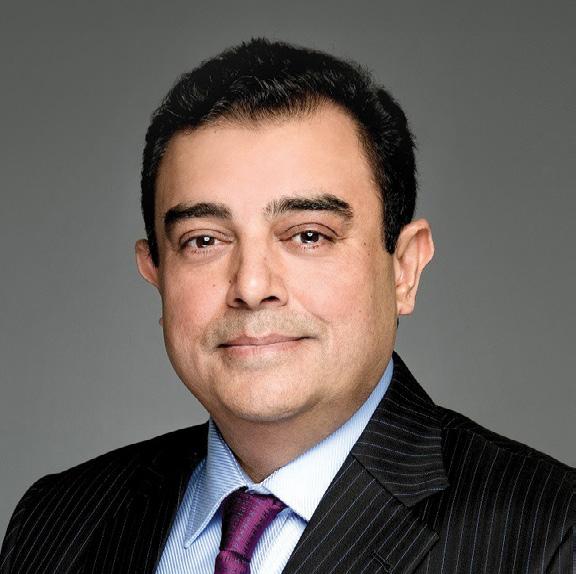
IMRAN FAROOQ CEO SAMANA DEVELOPERS
launch. That tells you demand is far outpacing supply. So it’s not about who’s buying the most; it’s about who gets there first.
And this is all off-plan?
Yes, entirely. That’s our expertise. From a cash flow point of view, we’re very comfortable. Within a year, we usually collect 40 to 45 per cent of the sale value. That gives us the capital to focus entirely on project delivery.
Are prices continuing to rise then, from what you’re seeing?
Yes. There’s a common belief that enough property is being launched, but I disagree. Population is growing at 12–13 per cent annually, and even if every project is delivered on time, there would still be a shortage. We’d see rental prices coming down if there were enough supply, but that’s not happening.
Rents are still rising across the board. Some landlords may be asking for a 15 per cent hike instead of 30 per cent, but the overall trend is upward. Streets are busy, offices are full, and even basement parking is packed. Our own data and conversations with DEWA confirm demand for electricity and water is up 13 per cent.
We’re also seeing more premium buyers. Transactions worth Dhs200m and above were unheard of before. Now they happen regularly in Emirates Hills, Dubai Hills, Palm Jumeirah. When buyers like that come in, they also demand high-end rental properties, supercars, and more. The economic wheel is spinning fast.
Many residents in Dubai have seen your billboard on the highway saying that Samana is the “7th Largest Developer.” That really stands out. Most companies would say they’re number one. Why highlight number seven?
Good question. The ranking comes from official Land Department data, which is collated in real-time by Property Monitor. Based on the number of units sold, we’re ranked 7th and hold a 4.4 per cent market share, which is huge when you consider how competitive the market is.
WE’RE ALSO SEEING MORE PREMIUM BUYERS. TRANSACTIONS WORTH DHS200M AND ABOVE WERE UNHEARD OF BEFORE. NOW THEY HAPPEN REGULARLY IN EMIRATES HILLS, DUBAI HILLS, PALM JUMEIRAH. WHEN BUYERS LIKE THAT COME IN, THEY ALSO DEMAND HIGH-END RENTAL PROPERTIES, SUPERCARS, AND MORE. THE ECONOMIC WHEEL IS SPINNING FAST.”
The top developers — Emaar, Nakheel, Meraas — hold vast desert land. So we take pride in being independent and still ranked so highly. Out of 1,200–1,300 developers in Dubai, just 13–14 control 91 per cent of the market. That makes our share even more meaningful.
This year, we expect to be 6th, and as of now we’re actually 5th. But we’re comfortable sitting in the 6–7 range. We’re not aiming to be number one: that’s a different playing field.
That growth must have required some serious momentum in terms of your sales?
Absolutely. Over the last five years, we’ve grown at a compound annual rate of 229 per cent. This year, we’re expanding beyond residential. We’ve launched our first commercial office tower — Samana Barari Avenue — and will also launch a hotel and several retail projects. Our mission, announced last October, is to operate across all real estate verticals: offices, hotels, retail, warehouses, labour accommodations: you name it.
Why the shift into office space?
Office space has been the best-performing asset in the past 12 months. Rents have more than doubled. In Bay Square, for instance, our rents have tripled since 2020. No one was building office towers post-2008, so supply dried up. There’s strong demand for Grade A+ office space with resort-style amenities with swimming pools, gyms, retail, cafes and more. Our Barari Avenue project offers all of that.
What else should we keep an eye on in the property market right now?
One important thing during this boom is that selling is easy, but building will become harder. So we’ve invested Dhs150m in setting up our own inhouse contracting company. This gives us control over quality, consistency, and delivery speed. We’re no longer reliant on third-party contractors and can build to our own standards. It’s part of our strategy to own the entire value chain. By the end of the year, we’ll also announce our own master community. I can’t reveal the location yet, but it’s part of our diversification strategy — end-to-end development.
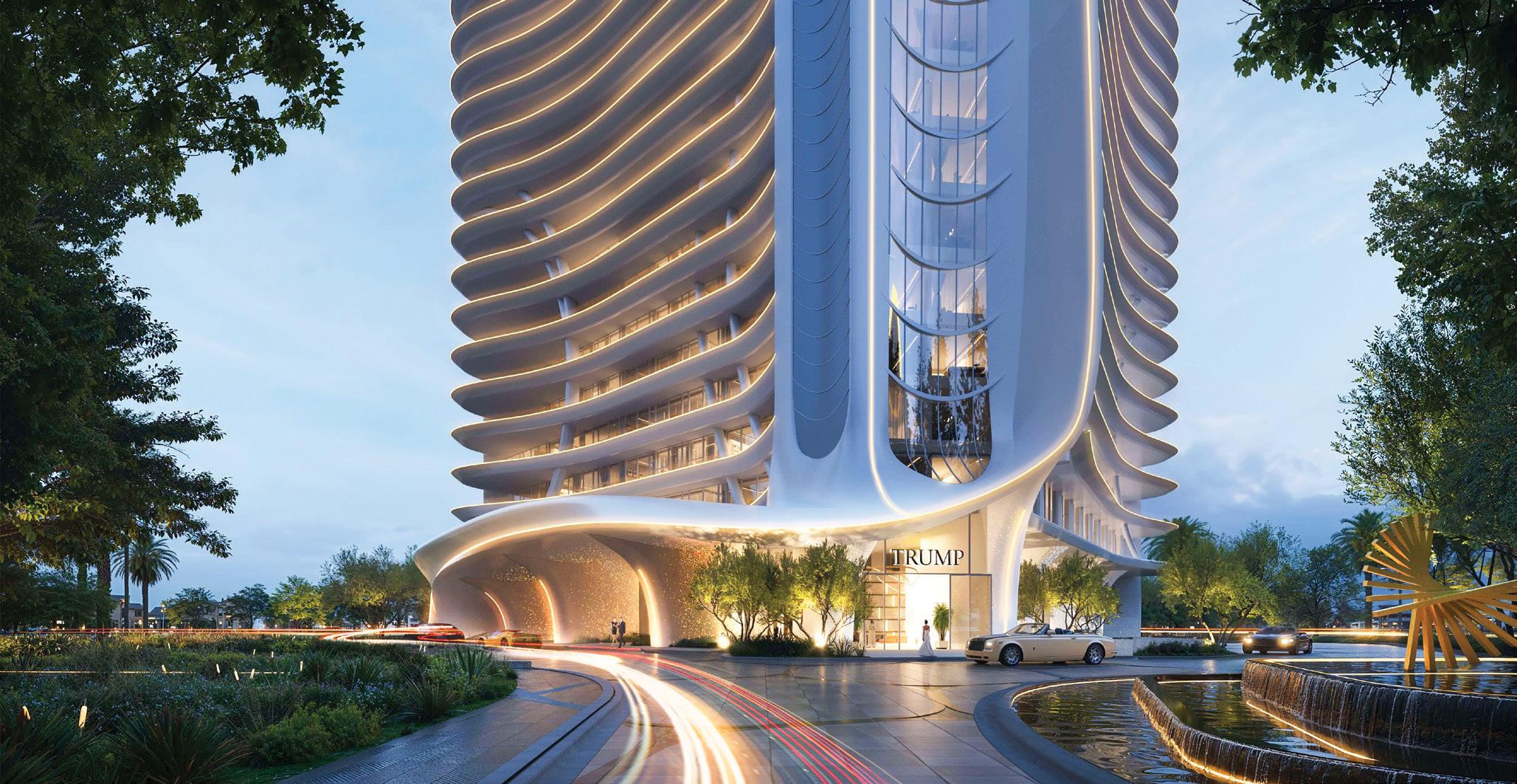
AS DAR GLOBAL ACCELERATES ITS EXPANSION ACROSS KEY INTERNATIONAL MARKETS, CEO ZIAD EL CHAAR SITS DOWN WITH US TO DISCUSS THE BOLD STRATEGIES DRIVING THE COMPANY’S ASCENT
From the recent launch of the Trump Tower Dubai in partnership with the Trump Organization to exploring tokenised real estate and branded luxury developments from Muscat to Madrid, CEO Ziad El Chaar explains to Gulf Business editor, Neesha Salian, how Dar Global — the international arm of Dar Al Arkan — is redefining the global real estate landscape. With a focus on investor-first focus, ESG principles, and brand-driven development, the conversation offers insight into the company’s global footprint and the leadership mindset shaping its operations and future.
This is an exciting time, especially with the project involving the Trump Organization. What has driven the strategy behind this partnership and your broader regional expansion?
We started Dar Global almost four years ago, though the parent company, Dar Al Arkan, has a legacy spanning over 31 years. Dar Global focuses on developing international cities for HNWIs. When we went public in 2023 on the London Stock Exchange, we committed to becoming one of the world’s top 50 global real estate developers. That goal requires pushing our annual revenue close to $3bn. So, we built the team, launched branches, and initiated developments across key cities. Now it’s time to amplify results. We’ve been partnering with globally respected brands to maximise
returns for our shareholders and real estate investors. The Trump brand, in particular, has strong global recognition and premium appeal. I helped introduce the Trump brand to Dubai 10 years ago with a golf community that became one of the city’s best.
We launched in Muscat with Trumpbranded residences, attracting investors from over 50 nationalities. In Jeddah, we created a 47-storey premium tower with a Trump members-only club — another project that has drawn global attention, especially with Saudi Arabia’s new foreign investment laws that only came into effect last year. The brand brings luxury, exclusivity, hospitality, and international reach.
Dubai’s real estate market is famously competitive. How do you see the Trump Tower project standing out among other iconic developments?
In real estate, the key element is always location. We chose a prime spot on Sheikh Zayed Road, right at the entrance of Downtown Dubai. This gives residents access to all the amenities of Downtown — without the traffic.

ZIAD EL CHAAR
CEO DAR GLOBAL
The views are stunning — Burj Khalifa on one side, and the sea, Jumeirah Bay, and La Mer on the other.
Beyond location, we’re adding value through hospitality. We’ve been investing heavily to bring the Trump Hotel brand to Dubai. We’re also introducing the Trump Members Club, and residences that come with access to what will be the world’s highest outdoor swimming pool.
When you combine all of that with Dar Al Arkan’s 31-year track record, you have a truly compelling offer. Our promise is to consistently outperform the market — not with hype, but with delivery and design that attract strong returns.
Let’s talk about technology and sustainability. Where does Dar Global stand on tokenisation and ESG?
Tokenisation is very close to my heart. I tried to initiate a real estate tokenisation project in Dubai back in 2018 and even published a white paper on the topic.
Dubai, with its investor diversity, is ideal for tokenisation. But it’s not just about creating tokens —you also need liquidity. If there’s no exchange to trade tokens, the system is half-cooked. We need a Dubai Security Tokens Exchange, like the Dubai Financial Market, where real estate tokens can be traded.
On sustainability, we take ESG seriously. Being listed in London means we comply with strict FCA guidelines. We try to go beyond local market standards and lead in ESG delivery.
In addition to the Trump brand, you’ve partnered with several others. What drives your strategy in branded residences? We currently have 14 branded residence partnerships. Our strategy is investor-focused. We develop only in international cities with demand from multiple nationalities. Branded residences offer high desirability and limited supply, making them stable, highyield products.
These global names help us offer something unique in each city. When you add a respected brand to a luxury location, you create a product that’s both exclusive and consistently in demand.
How are your international markets progressing, particularly Spain, Oman, the US, among others?
Our strategy is to develop in cities with broad, international demand. Many of our investors buy in multiple global locations — so in a way, we’re helping them complete their collections.
We’re already active in Doha, Moscow, Dubai, Muscat, Riyadh, Jeddah, Central London, southern Spain, and soon, Athens. We’re also exploring collaborations in parts of the US.
For now, we’re focusing on deepening our presence in these existing cities. Opening a new development setup is costly, so our priority is to grow where we’ve already established a footprint.
What leadership principles have guided you and your company to this level of success?
It’s all about focus. We don’t do everything. We chose a path — luxury real estate in international cities — and we’ve stayed true to it.
Every project we pursue is evaluated through one lens: is this good for our investors and shareholders? Can our team deliver it without being stretched? We don’t build because we like an idea; we build only if it serves all our stakeholders.
What advice would you give to other real estate leaders navigating today’s volatile global market?
Focus on scarcity. In real estate, it’s all about supply and demand. Don’t be the 700th tower in the suburbs with generic views. Those products perform only when the market is booming.
Instead, offer something unique: a oneof-a-kind product, a top-tier location, or cost leadership — though the latter is the hardest because you can’t control material costs. If you’re not unique or cost-efficient, don’t enter this business.
You are a busy CEO. How do you find a work-life balance?
I was taught by my late parents that you give everything to your work and livelihood — and whatever time is left, you live your life.
This idea of working six hours a day and prioritising weekends doesn’t hold in our world. If a client wants to meet on a Saturday, you show up in a suit. That’s what I teach my daughter too. Hard work, loyalty, and contribution to your institution’s success should the core values driving you.
Any parting thoughts?
My first interaction with Dubai’s real estate scene was at Cityscape 2012 in the World Trade Center. It’s amazing to see how far we’ve all come in just 20 years.

‘RAK
WAith the launch of Oystra on Al Marjan Island, Richmind is making a bold entry into the UAE real estate scene — backed by Zaha Hadid Architects, a billion-dollar investment, and a deep belief in Ras Al Khaimah’s (RAK) future. CEO Mohammed Rafiee shares why RAK is on the cusp of a luxury renaissance, and how Richmind aims to lead it with visionary design, immersive experiences, and a multi-billion-dirham development pipeline.
Why was RAK chosen as the destination for your project?
Ras Al Khaimah (RAK) represents the next frontier of luxury real estate in the UAE. With its pristine coastline, strategic investmentfriendly initiatives, and visionary infrastructure planning, RAK is rapidly evolving into a magnet for both regional and global investors. Al Marjan Island, in particular, offers a unique proposition — being one of the UAE’s first entertainment and gaming destinations. For Richmind, this aligns perfectly with our goal of creating iconic, experiential spaces. RAK provides the canvas and context we needed to introduce Oystra, a development that isn’t just residential, but an architectural and lifestyle landmark
How is RAK expected to yield results as other thriving emirates?
RAK is entering a golden era of growth, following in the footsteps of Dubai and Abu Dhabi, but with its own distinct value proposition. The emirate’s commitment to tourism, luxury infrastructure, and regulatory reforms — particularly around gaming and international hospitality — positions it as a high-potential market. By combining natural beauty, lower entry barriers, and ambitious leadership, RAK is poised to yield exceptional ROI. We believe Oystra will be a cornerstone of this transformation, attracting discerning buyers looking for rarity, serenity, and global design sophistication.

MOHAMMED RAFIEE CEO RICHMIND
a calculated decision by investing in Al Marjan Island and furthermore, have made significant investments that will break the billion-dollar threshold. The figures alone go to show how much confidence we have in RAK real estate growing exponentially.
What are the key USPs of the project and how will this be a differentiator for other projects in RAK?
Oystra is defined by three core pillars: iconic design, curated lifestyle, and service excellence. Designed by Zaha Hadid Architects, it brings a level of architectural artistry previously unseen in RAK. Our residences feature panoramic sea views, a 360-degree rooftop infinity pool, and a private crystal lagoon — blending sculptural form with functional luxury. Every element, from HBA-designed interiors to a five-star concierge experience, reflects our belief that luxury lies in thoughtful details. Oystra isn’t just different — it sets a new benchmark for real estate.
What is your anticipated vision for RAK’s surging real estate market?
RAK is at the cusp of a real estate renaissance. As visionary projects like Wynn and Al Marjan Island gain global attention, RAK is set to attract a new wave of ultra-high-net-worth individuals, creative entrepreneurs, and culturally driven residents. Richmind sees this moment as the beginning of a bold transformation.
What are your plans for the next five years?
Pics: Supplied
How much investment is allocated for the project and growth in Ras Al Khaimah?
Selecting Ras Al Khaimah to be home to our inaugural project is due to the immense growth potential that the emirate has. We have made
Over the next five years, Richmind will roll out a curated portfolio of ultra-niche, design-driven developments across the UAE. With a pipeline valued in the billions, we will potentially enter the hospitality space and introduce branded residences to strengthen our position in the UAE market. Each development will carry our signature of originality, excellence, and cultural integration.

